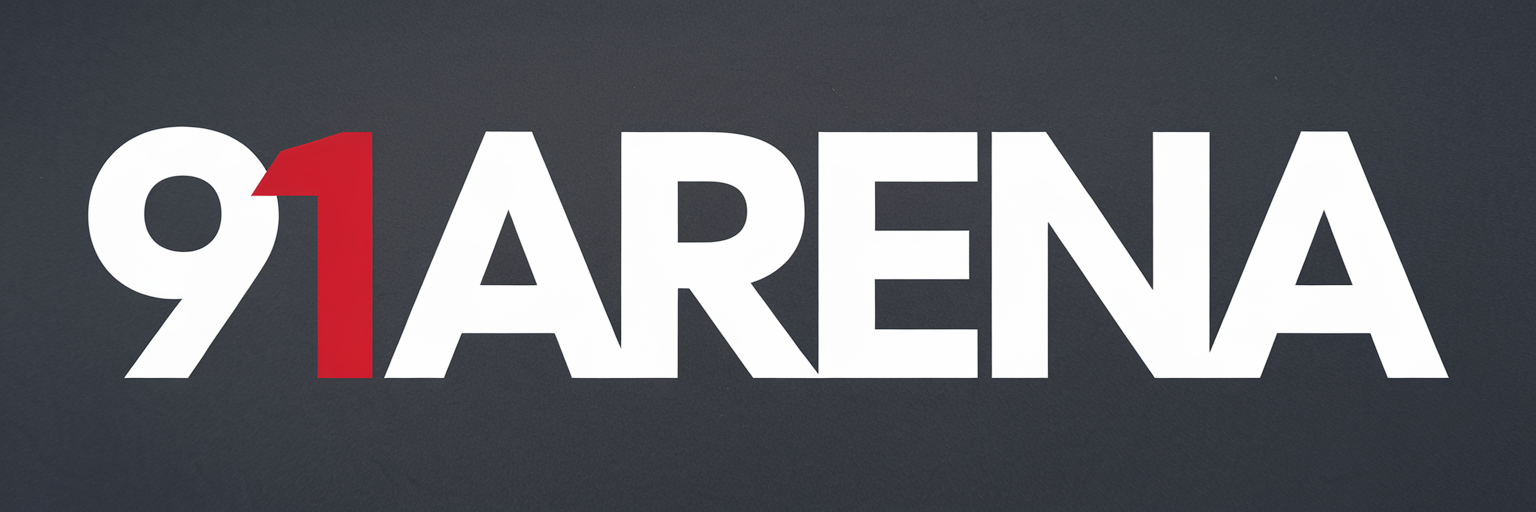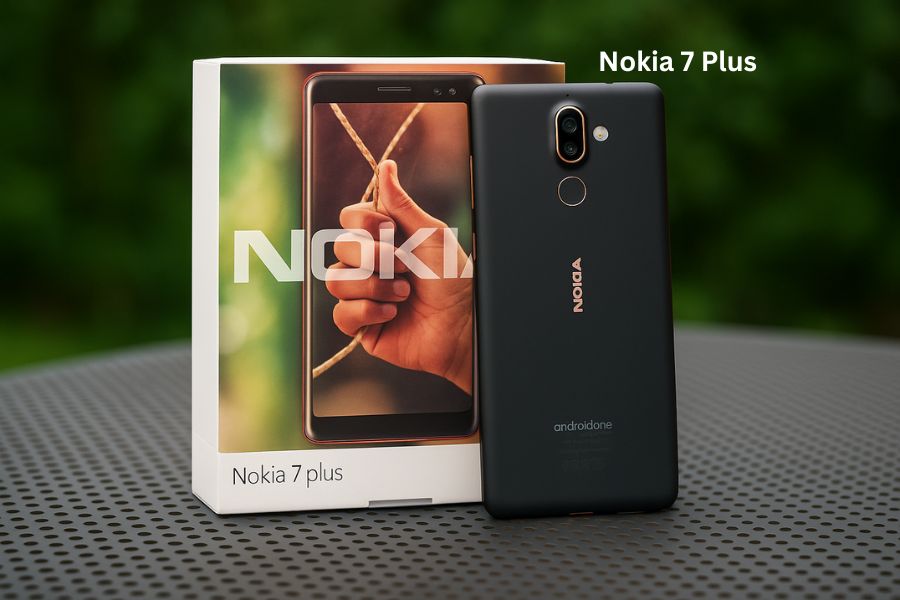The Nokia 7 Plus is a device that captured the imagination of smartphone enthusiasts when it was launched, not only because it bore the legacy of the iconic Nokia brand but also because it delivered impressive hardware and a clean Android experience at an attractive price point. Even years after its launch, the Nokia 7 Plus is remembered as one of the most balanced smartphones of its time.
In this article, we take a detailed look at every aspect of the Nokia 7 Plus, from its design and display to its performance, camera quality, battery life, and software updates. Let’s dive into why this phone still holds a place in the hearts of many and how it shaped the perception of mid-range phones in its era.
Nokia 7: Design and Build Quality: Premium in Every Sense
One of the standout features of the Nokia 7 Plus was its design and build quality. Crafted from a single block of 6000-series aluminum, the phone had a matte ceramic coating that gave it a unique texture and feel. The copper accents around the edges, camera module, and fingerprint scanner added a premium touch that was rarely seen in mid-range smartphones. With chamfered edges and a slightly curved back, the Nokia 7 Plus was comfortable to hold and exuded durability and elegance at the same time.
The design was minimal yet elegant, with subtle branding and no unnecessary gimmicks. Its tall 18:9 aspect ratio, combined with thin bezels and solid construction, made the phone feel like it belonged in a higher segment. Even the physical buttons were tactile and well-placed, and the overall in-hand experience was one of the best in its class.
Nokia 7 Display: Full HD+ Brilliance on a 6-Inch Panel
The Nokia 7 Plus came equipped with a 6.0-inch Full HD+ IPS LCD display, offering a resolution of 2160×1080 pixels. With an 18:9 aspect ratio and Gorilla Glass 3 protection, the screen provided immersive visuals, wide viewing angles, and decent outdoor visibility. Although not an AMOLED panel, the color reproduction was excellent, with punchy colors and sharp contrast levels for an LCD.
Whether you were watching videos, playing games, or browsing the web, the display offered a satisfying experience. Nokia also provided a color adjustment mode in the settings, allowing users to choose between more vivid or natural tones. The tall screen also helped improve multitasking, particularly with split-screen functionality in Android.
Nokia 7 Performance: Snapdragon 660 at Its Best
The heart of the Nokia 7 Plus was the Qualcomm Snapdragon 660 processor, which was considered a powerful mid-range chipset at the time. Combined with 4GB of LPDDR4 RAM and 64GB of eMMC 5.1 internal storage, the phone handled everyday tasks with ease. Whether it was multitasking, gaming, or running intensive apps, the Nokia 7 Plus rarely showed signs of lag or stutter.
This chipset struck a great balance between power efficiency and performance. Games like PUBG Mobile, Asphalt 9, and Shadowgun Legends ran smoothly at medium to high settings. The Adreno 512 GPU did an excellent job of handling graphics, and thermal management was solid, with the phone rarely heating up during prolonged sessions.
Moreover, the presence of Android One ensured that the software was lightweight and optimized, contributing to the phone’s snappy performance. Users appreciated how fluid the UI felt, especially compared to heavily skinned alternatives from other brands.
Nokia 7 Software Experience: The Android One Advantage
One of the biggest selling points of the Nokia 7 Plus was its inclusion in the Android One program. This meant that the device came with a stock Android experience, free from bloatware, with timely security patches and guaranteed updates for at least two years. Out of the box, the phone launched with Android 8.0 Oreo and quickly received updates to Android 9 Pie and Android 10.
The software was clean, fast, and intuitive, making the user experience enjoyable. Features like Google Assistant integration, Digital Wellbeing, and Adaptive Battery were seamlessly integrated, and Nokia ensured that updates were pushed out in a timely manner. Unlike other manufacturers, there were no ads, no custom skins, and no unwanted pre-installed apps.
For many users, the software experience was a primary reason to choose the Nokia 7 Plus. The near-stock Android UI ensured consistency and reliability, while regular updates added new features and security improvements over time.
Nokia 7 Camera Performance: Zeiss Optics in Action
The Nokia 7 Plus boasted a dual-camera setup on the rear, featuring a 12MP primary sensor with an f/1.75 aperture and a 13MP telephoto lens with 2x optical zoom and an f/2.6 aperture. Both sensors were tuned by Zeiss optics, a trusted name in the world of photography. The front camera housed a 16MP sensor with an f/2.0 aperture, also bearing the Zeiss badge.
In daylight, the Nokia 7 Plus captured detailed and vibrant images, with good dynamic range and accurate color reproduction. The dual-lens setup enabled portrait mode shots with decent edge detection and natural-looking bokeh. The 2x optical zoom allowed users to get closer to the subject without losing detail, and it was a rare feature in this segment during its time.
Low-light performance was acceptable, although it did introduce noise and a slight drop in sharpness. Nokia had implemented a decent Night Mode through software updates, improving the low-light results over time. The Pro Mode allowed enthusiasts to manually adjust ISO, shutter speed, white balance, and focus, providing more creative control.
The front camera performed well for selfies and video calls, with accurate skin tones and sharp detail. The inclusion of “Bothie” mode, which used both front and rear cameras simultaneously, was a novelty and added an extra dimension to content creation.
Nokia 7 Battery Life: Long-Lasting and Reliable
Equipped with a 3800mAh battery, the Nokia 7 Plus offered excellent battery life for its time. Thanks to the power-efficient Snapdragon 660 processor and the software optimizations of stock Android, users could easily get over a day and a half of use on a single charge.
Whether you were streaming videos, browsing the internet, or playing games, the battery held up well. Screen-on time consistently hovered between 6 to 8 hours, depending on usage patterns. Standby time was impressive, and battery drain during idle periods was minimal.
Fast charging support via USB Type-C and 18W Quick Charge 3.0 enabled users to charge the device quickly, going from 0 to 50% in about 30 minutes. This made it convenient for users who were always on the move and needed quick top-ups during the day.
Nokia 7 Audio and Multimedia: Rich and Clear Experience
The Nokia 7 Plus came with a single bottom-firing speaker, which was loud enough for casual media consumption. While it did not offer stereo sound, the audio quality was clear, with minimal distortion even at higher volumes. The presence of a 3.5mm headphone jack was a welcome addition, allowing users to connect their favorite wired headphones without any dongles.
The audio output via headphones was impressive, especially when paired with high-quality earphones. Nokia had included support for Nokia OZO audio recording, which allowed the device to capture spatial audio in videos, providing an immersive sound experience during playback.
Video playback was smooth, with support for Full HD resolution and compatibility with most video formats. The 18:9 display added to the cinematic experience, making the Nokia 7 Plus a solid choice for multimedia lovers.
Nokia 7 Connectivity and Sensors: Modern and Functional
In terms of connectivity, the Nokia 7 Plus supported 4G VoLTE on both SIM slots, ensuring seamless calling and data connectivity. Other features included Wi-Fi 802.11ac, Bluetooth 5.0, GPS with GLONASS and BDS, USB Type-C, and NFC for contactless payments.
The device came with all essential sensors, including a rear-mounted fingerprint scanner, ambient light sensor, proximity sensor, accelerometer, gyroscope, and compass. The fingerprint scanner was fast and accurate, while the face unlock feature, introduced via a software update, worked reasonably well under good lighting conditions.
Call quality was excellent, with clear audio and strong network reception. The phone’s microphone and speaker setup ensured that conversations remained crisp and uninterrupted, even in noisy environments.
Nokia 7 Durability and Longevity: Built to Last
One of the less talked about but highly appreciated qualities of the Nokia 7 Plus was its durability. The unibody aluminum chassis and robust construction meant that the phone could withstand minor drops and rough usage without major damage. The ceramic coating, though susceptible to fingerprints, provided scratch resistance and a smooth finish.
The Gorilla Glass 3 on the display offered decent protection against scratches and cracks, although a screen protector was recommended for additional safety. Over time, users reported that the phone aged well, with minimal degradation in performance or physical integrity.
Even several years after its release, many users continue to use the Nokia 7 Plus as their primary device, a testament to its long-lasting nature and reliable performance.
Nokia 7 Market Impact and Legacy
When the Nokia 7 Plus was launched, it was priced aggressively in the mid-range segment, competing with devices like the Xiaomi Mi A2, Moto X4, and Honor 8X. What set it apart was its premium design, solid hardware, stock Android experience, and trusted brand name.
The phone received positive reviews from critics and users alike, earning praise for its balanced performance and thoughtful feature set. It served as a model for how Android One could shine on capable hardware, and it helped HMD Global gain credibility in the competitive smartphone market.
Its legacy lives on as one of the best Android One phones ever made and a benchmark for future Nokia devices. For many, it symbolized Nokia’s return to relevance in the smartphone world.
Nokia 7 Conclusion: A True Mid-Range Legend
The Nokia 7 Plus was more than just a smartphone; it was a statement of quality, simplicity, and performance. In an era flooded with gimmicky features and overly customized UIs, it stood out with its clean software, powerful internals, and elegant design. It was a phone that didn’t try too hard but delivered consistently in all key areas.
Even today, the Nokia 7 Plus is remembered fondly by its users, many of whom still use it or regard it as one of the best purchases they ever made. It combined Nokia’s legacy of durability with modern Android experiences, setting a benchmark for mid-range devices. While the smartphone world has moved on, the Nokia 7 Plus will always be remembered as a classic that struck the perfect balance between functionality, style, and value.

